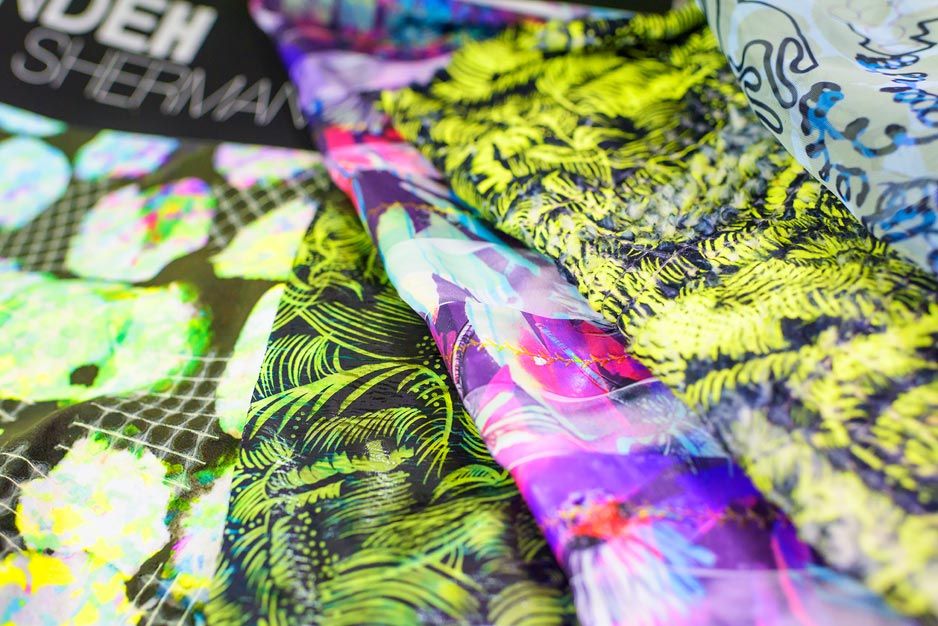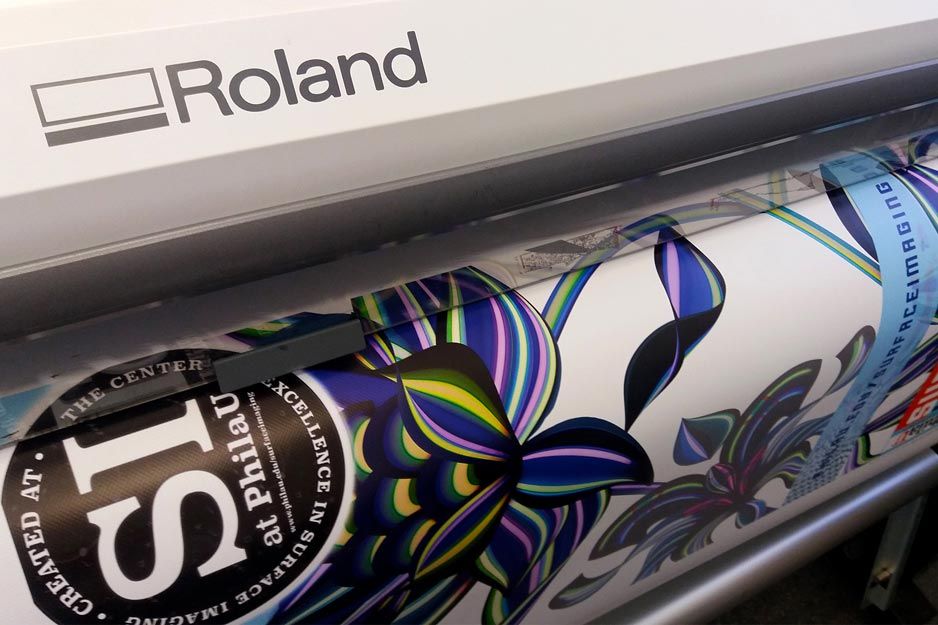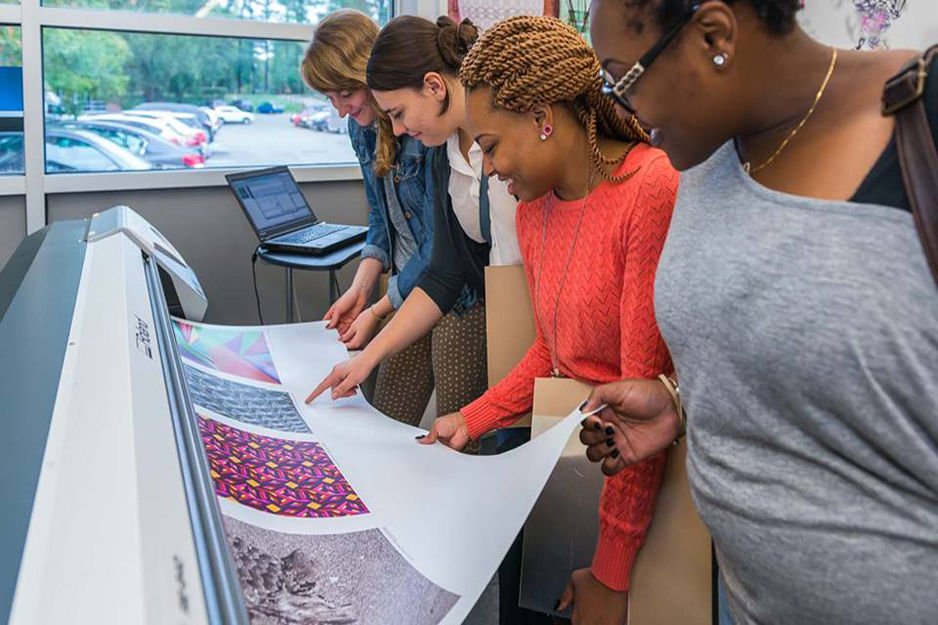Technology for the Next Generation of Print Producers
Jefferson's Center for Excellence in Surface Imaging | Philadelphia, Pennsylvania
Mark Mattson and Wendelyn Anderson, Technical Associates at Jefferson’s Center for Excellence in Surface Imaging in Philadelphia, Penn., are regularly asked to push the envelope of print production capabilities. “There are some very creative people here,” said Mattson.
The Center’s Director, Hitoshi Ujiie, partnered with Roland DG to include Roland DG equipment in the Center’s Porous and Non-Porous labs. In Mattson’s Non-Porous Lab, students use a 64-inch VersaArt® RE-640 roll- to-roll printer and a CAMM-1 Pro GX series 64-inch cutter. In Anderson’s Porous Lab, they use a Roland DG Texart™ RT-640 dye-sublimation printer. Both facilities run Roland DG’s specially formulated inks exclusively.
Printing on Anything and Everything
Students in the Non-Porous Lab print on everything from shower curtains to raincoats. They also create signage, decals, and wall coverings, as well as wraps for housewares and vehicles. “Students bring their own materials to print on, and we also work with manufacturers to test their materials. Whatever substrate we may be using, it usually works on the Roland DG, so we try that first,” said Mattson.
He also praises Roland DG’s ink adhesion and drying capabilities. “That vivid color, or window graphics you want to pop, we always know we’ll get great results,” he said.
Dye-Sublimation is “In”
In Wendelyn Anderson’s Porous Lab, students use Roland DG’s RT-640 dye-sublimation printer. Anderson’s Lab generates research and prints for College of Design supporters Under Armour and Sunbrella. They also print for photographers and artists, producing decorative items like pillows and scarves, as well as printing on unusual substrates for exhibition. Anderson’s lab even prints faculty research posters on fabric for easy transport to conferences.
“Dye-sublimation printing is huge right now,” said Anderson. Students use the RT-640 to create textile designs on backpacks, accessories, socks, and even curtains. They also work with companies like Target and Urban Outfitter on fabric designs.
Anderson has been pleased with the dependability and ease of use of their Roland DG Texart dye-sublimaton printer. “The Roland DG is reliable and simple to operate,” she said. “All of our students use it – having eight colors of ink is a great feature.”
The Center’s Director, Hitoshi Ujiie, partnered with Roland DG to include Roland DG equipment in the Center’s Porous and Non-Porous labs. In Mattson’s Non-Porous Lab, students use a 64-inch VersaArt® RE-640 roll- to-roll printer and a CAMM-1 Pro GX series 64-inch cutter. In Anderson’s Porous Lab, they use a Roland DG Texart™ RT-640 dye-sublimation printer. Both facilities run Roland DG’s specially formulated inks exclusively.
“That vivid color, or window graphics you want to pop, we always know we’ll get great results.”
Printing on Anything and Everything
Students in the Non-Porous Lab print on everything from shower curtains to raincoats. They also create signage, decals, and wall coverings, as well as wraps for housewares and vehicles. “Students bring their own materials to print on, and we also work with manufacturers to test their materials. Whatever substrate we may be using, it usually works on the Roland DG, so we try that first,” said Mattson.
He also praises Roland DG’s ink adhesion and drying capabilities. “That vivid color, or window graphics you want to pop, we always know we’ll get great results,” he said.
Dye-Sublimation is “In”
In Wendelyn Anderson’s Porous Lab, students use Roland DG’s RT-640 dye-sublimation printer. Anderson’s Lab generates research and prints for College of Design supporters Under Armour and Sunbrella. They also print for photographers and artists, producing decorative items like pillows and scarves, as well as printing on unusual substrates for exhibition. Anderson’s lab even prints faculty research posters on fabric for easy transport to conferences.
“Dye-sublimation printing is huge right now,” said Anderson. Students use the RT-640 to create textile designs on backpacks, accessories, socks, and even curtains. They also work with companies like Target and Urban Outfitter on fabric designs.
Anderson has been pleased with the dependability and ease of use of their Roland DG Texart dye-sublimaton printer. “The Roland DG is reliable and simple to operate,” she said. “All of our students use it – having eight colors of ink is a great feature.”




